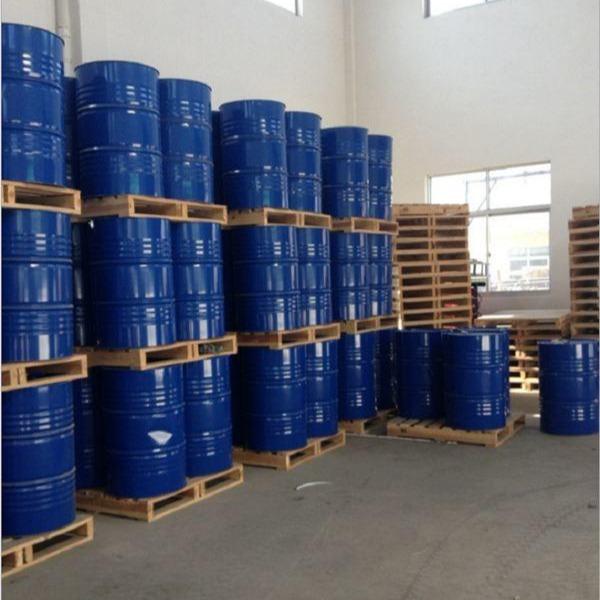-

Dicyclopentadiene
Dicyclopentadiene (DCPC) is a dimer of cyclopentadiene. Cyclopentadiene is first heated to copolymerize into dicyclopentadiene, and dicyclopentadiene is separated from other light components (boiling point <45°C) by distillation, and then other required dienes, monoolefins and saturated hydrocarbon components are separated by solvent extraction. High-purity dicyclopentadiene is a colorless crystal at room temperature. When it contains impurities, it is a light yellow oily liquid with a pun...Read more -

Dicyclopentadiene
Dicyclopentadiene (DCPC) is a dimer of cyclopentadiene. Cyclopentadiene is first heated to copolymerize into dicyclopentadiene, and dicyclopentadiene is separated from other light components (boiling point <45°C) by distillation, and then other required dienes, monoolefins and saturated hydrocarbon components are separated by solvent extraction. High-purity dicyclopentadiene is a colorless crystal at room temperature. When it contains impurities, it is a light yellow oily liquid with a pun...Read more -

Cyclopentane
Chemical properties: Colorless liquid, melting point -93.9℃, boiling point 49.26℃, relative density 0.7460 (20/4℃), refractive index 1.4068, flash point -37℃. It is miscible with organic solvents such as alcohol and ether, but insoluble in water. Applications: 1. Used as a solvent for solution polymerization of polyisoprene rubber and cellulose ether, as a substitute for Freon for insulation materials of refrigerators and freezers, as a foaming agent for other rigid PU foams, and as a standar...Read more -

2-Methylbutane
Chemical properties: Colorless transparent liquid. Melting point is -160℃, boiling point is 27.85℃ (30-30.2℃), relative density is 0.6201, refractive index is 1.3537, flash point is -56℃. It is miscible with ethanol and ether, but insoluble in water. Uses: 1. When used as a solvent, it has the same effect as pentane, hexane, heptane, etc., and its solubility is slightly worse than pentane. This product has a high octane number and can be used as fuel for automobiles and aircraft. 2. It can be...Read more -

Pentane
n-Pentane is an organic compound that appears as a colorless, flammable liquid. It is slightly soluble in ethanol, ether and hydrocarbons. It is mainly used as a solvent, gas chromatography reference fluid, and anesthetic. It can also be used to make artificial ice, anesthetics, and synthesize amyl alcohol and isopentane.Read more -

2,6-Dimethyl-4-heptanone
Chemical properties: Colorless oily liquid. It has green, ether, fermented, fruity and sweet jackfruit or mint aromas. Boiling point 169°C, flash point 45°C. Insoluble in water, soluble in ethanol and oils. Natural products exist in kangniang wine, wine, etc. Uses: 1. Food flavoring. Mainly used to prepare flavors for jackfruit, banana, orange juice, passion fruit, tropical fruits, rum and kangniang wine. 2. This product is mainly used as an organic solvent and can also be used in organic syn...Read more -

3-Methyl-1-butene
Chemical properties: 3-Methyl-1-butene is a colorless, volatile liquid with a non-irritating odor. It is insoluble in water, but soluble in alcohol and ether. Uses: 3-Methyl-1-butene is mainly used in organic synthesis and the manufacture of high octane fuel.Read more -

Methyl tetrahydrophthalic anhydride
Methyltetrahydrophthalic anhydride, also known as methyltetrahydrophthalic anhydride, is a light yellow transparent oily liquid. It is an important intermediate in electronic information materials, medicine, pesticides, resins, and national defense industries. It can also be used in coatings, plasticizers, pesticides and other industries.Read more -

Dicyclopentadiene
Dicyclopentadiene (DCPC) is a dimer of cyclopentadiene. Cyclopentadiene is first heated to copolymerize into dicyclopentadiene, and dicyclopentadiene is separated from other light components (boiling point <45°C) by distillation, and then other required dienes, monoolefins and saturated hydrocarbon components are separated by solvent extraction. High-purity dicyclopentadiene is a colorless crystal at room temperature. When it contains impurities, it is a light yellow oily liquid with a pun...Read more -

TRANS-1,3-PENTADIENE
1,3-Pentadiene is a relatively active cationic monomer, but there are many side reactions in its polymerization system, such as chain transfer, cyclization, cross-linking, etc. Therefore, the PD cationic polymerization initiated by Lewis acid such as AlCl3 is not completely converted, the polymer molecular weight is low, and a large amount of gel is produced. It has been reported that the TMSCl/AlCl3 system has high initiation activity, and the PD polymerization reaction initiated by it has a...Read more -

Isoprene
Chemical properties: Colorless, volatile, irritating oily liquid. Insoluble in water, soluble in benzene, easily soluble in ethanol, ether, and acetone. Uses: 1. This product is an important monomer for synthetic rubber, accounting for 95% of the total output of isoprene, mainly used for the synthesis of isoprene rubber, and its output ranks third after styrene-butadiene rubber and butadiene rubber. Secondly, it is used as a comonomer for the synthesis of butyl rubber to improve the vulcaniza...Read more -

Dicyclopentadiene
Dicyclopentadiene (DCPC) is a dimer of cyclopentadiene. Cyclopentadiene is first heated to copolymerize into dicyclopentadiene, and dicyclopentadiene is separated from other light components (boiling point <45°C) by distillation, and then other required dienes, monoolefins and saturated hydrocarbon components are separated by solvent extraction. High-purity dicyclopentadiene is a colorless crystal at room temperature. When it contains impurities, it is a light yellow oily liquid with a pun...Read more





